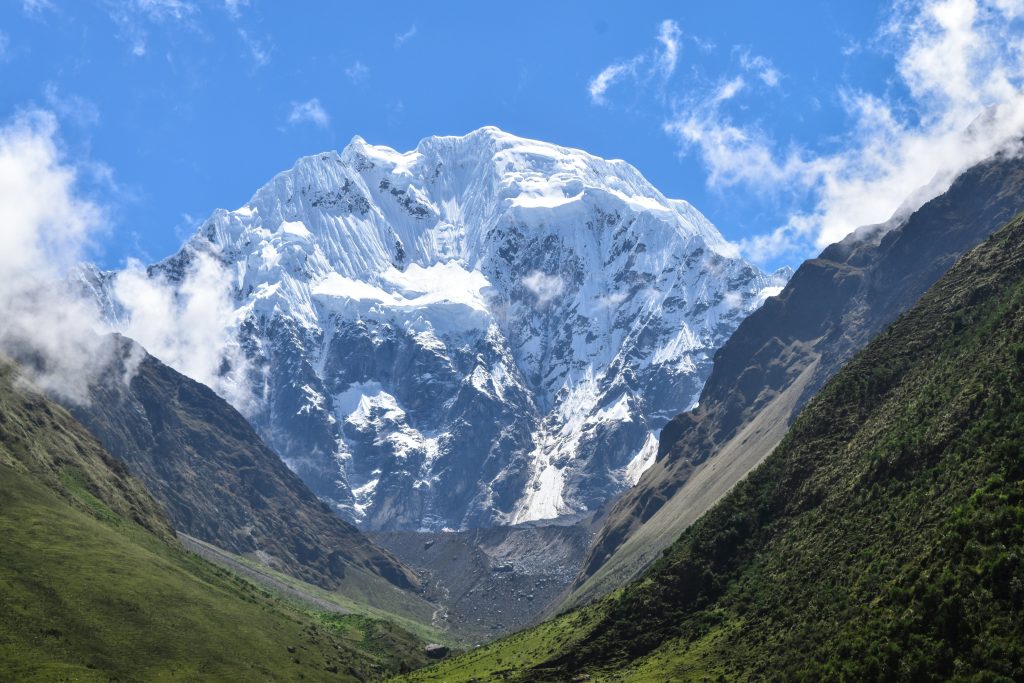If you’re dreaming about hiking to Machu Picchu and looking for an unforgettable adventure, the Salkantay Trek is one of the most exciting and scenic alternatives to the famous Inca Trail. It’s a favorite among thrill-seekers, nature lovers, and those who want a unique path less traveled. But before you pack your bags and lace up your hiking boots, you’re probably brimming with questions.
Let’s dive into the most frequently asked questions about the Salkantay Trek, so you can feel fully prepared and excited for the journey ahead.
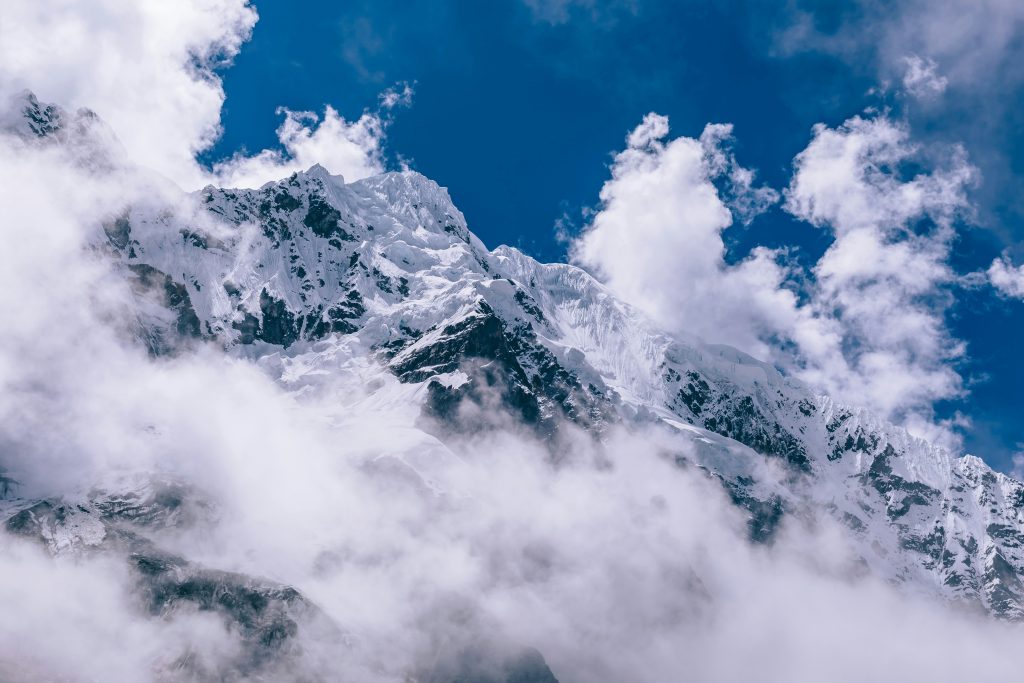
❓ 1. What is the Salkantay Trek?
The Salkantay Trek is a multi-day hiking route through the Peruvian Andes that takes you from the snowy peaks of Mount Salkantay (6,271 m / 20,574 ft) down into the lush cloud forests and eventually to Machu Picchu, the ancient Incan citadel. Unlike the Inca Trail, which follows original Incan paths and requires a permit, the Salkantay Trek is open to all hikers and doesn’t need special permits.
It’s known for its dramatic changes in climate and scenery, ranging from alpine mountains to tropical jungle. The trek is typically completed in 4 to 5 days, with distances averaging 60–75 km (37–46 miles) depending on the route taken.
🧭 2. How Difficult Is the Salkantay Trek?
The Salkantay Trek is considered moderately to challenging. While you don’t need to be an elite athlete, having a good level of physical fitness is important. The toughest part of the hike is reaching the Salkantay Pass (4,650 m / 15,255 ft), usually on the second day, which involves steep ascents and high altitude.
Key challenges include:
- High Altitude – The risk of altitude sickness is real. It’s highly recommended to spend at least 2 days in Cusco (3,400 m) beforehand to acclimatize.
- Long walking days – Expect to hike 6–9 hours per day, sometimes longer.
- Varied terrain – You’ll encounter rocky paths, river crossings, jungle trails, and steep descents.
💡 Pro Tip: Train with hikes or cardio exercises at least 4–6 weeks in advance if you’re not used to high-altitude trekking.
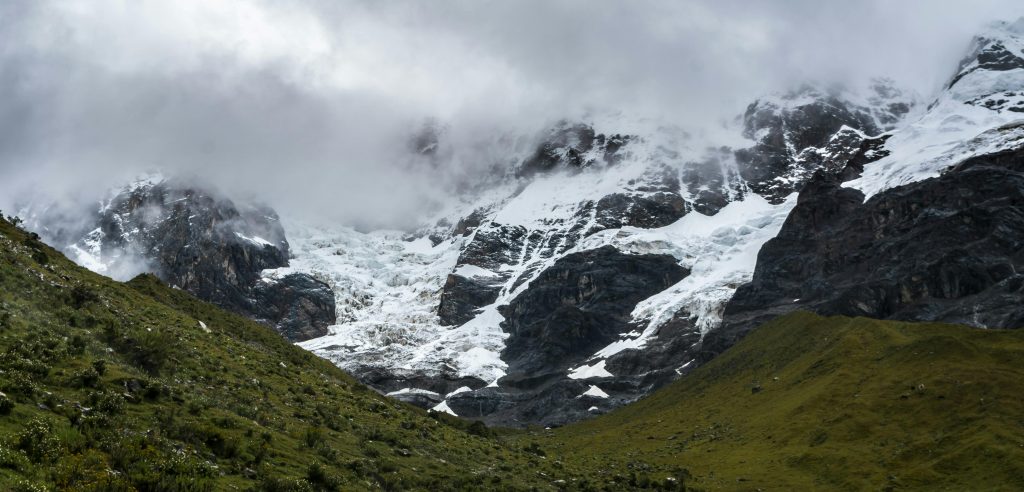
🌦️ 3. What’s the Weather Like on the Salkantay Trail?
One of the most fascinating aspects of the Salkantay Trek is the dramatic shift in climate. Over just a few days, you’ll go from snow-capped peaks to humid cloud forests.
Two main seasons:
- Dry season (April to October) – The best time to trek. Expect sunny days and cold nights, especially at high altitudes. Nighttime temperatures can drop below 0°C (32°F).
- Rainy season (November to March) – More frequent showers, slippery trails, and limited visibility, but fewer tourists and lush green landscapes.
Approximate temperatures:
| Region | Day | Night |
|---|---|---|
| High mountains (Salkantay Pass) | 5–15°C (41–59°F) | -5 to 0°C (23–32°F) |
| Jungle/cloud forest (Lucmabamba to Aguas Calientes) | 20–25°C (68–77°F) | 10–15°C (50–59°F) |
💧 Always be prepared for quick changes in weather. A good rain jacket and layered clothing are essential.
🎒 4. What Should I Pack for the Salkantay Trek?
Packing smart is key to a comfortable and successful hike. Keep your backpack light but complete, and don’t forget these essentials:
Clothing:
- Moisture-wicking base layers
- Thermal jackets and a windbreaker
- Rain gear (poncho or waterproof jacket)
- Comfortable trekking pants
- Warm hat, gloves, and scarf for the cold nights
- Breathable socks and broken-in hiking boots
Gear:
- A 30–50 L backpack (light and ergonomic)
- Sleeping bag rated for -10°C (can be rented)
- Trekking poles (highly recommended)
- Headlamp or flashlight
- Power bank or solar charger
Personal:
- Sunscreen, lip balm with SPF
- Insect repellent
- Basic first-aid kit and personal medications
- Water bottle or hydration system
- Snacks (nuts, energy bars, chocolate)
- Cash in soles (no ATMs on the trail)
- Passport (needed to enter Machu Picchu)
Let me know when you’re ready for the next part, which will cover:
- 🏕️ Accommodation
- 🧑🤝🧑 Guided vs. Self-Guided Trek
- 💰 Cost & Budget
- 🚂 What happens after reaching Machu Picchu
And more practical and insightful tips.
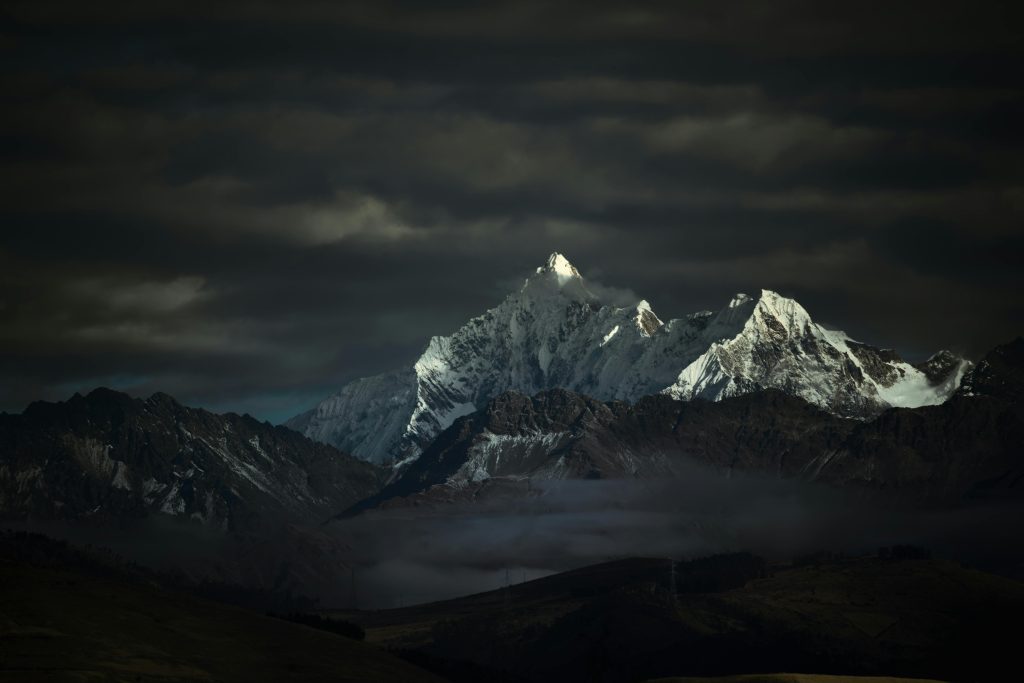
5. 🥾 How Fit Do I Need to Be for the Salkantay Trek?
One of the most common questions travelers ask is: “Do I have to be super fit to complete the Salkantay Trek?” The short answer is: you don’t need to be an athlete, but you should be in decent shape.
The Salkantay Trek is considered moderate to challenging, depending on your fitness level and experience with high-altitude hiking. Here’s what you should consider:
- Elevation gain and altitude: You’ll hike up to the Salkantay Pass at 4,650 meters (15,255 ft). That’s a serious altitude, and your body will need time to adjust. The air is thinner, and it’s normal to feel out of breath even with easy efforts.
- Daily hiking: Expect to walk 6–10 hours per day, covering 10–22 km daily. Some days are easier (mostly downhill), while others include steep climbs.
- Backpack weight: If you carry your own backpack, it adds to the difficulty. Most tours offer horses or porters for your main luggage, so you only carry a daypack.
💪 Training tips:
- Start walking or hiking a few months before your trip.
- Add stairs, inclines, or even weights to simulate carrying a backpack.
- Do some hikes at high elevation if possible to simulate conditions.
🚨 Don’t underestimate altitude sickness. Even very fit people can struggle if they ascend too quickly or don’t acclimatize. That’s why it’s recommended to spend at least 2 days in Cusco before your trek.
6. 🌤️ What’s the Weather Like on the Salkantay Trek?
The Salkantay Trek covers a wide range of altitudes and ecosystems, from snowy mountains to tropical jungle. That means the weather can change drastically, even in a single day.
Here’s what you can expect:
🏔️ High altitude areas (Salkantay Pass and beyond):
- Temperatures can drop below 0°C (32°F) at night, especially during the dry season.
- Days may be sunny and clear, but with cold winds and intense sun.
- Mornings are crisp and frosty; afternoons can be warm with proper sun exposure.
🌿 Lower jungle zone (Santa Teresa, Lucmabamba, etc.):
- Much warmer and more humid.
- Daytime temps can reach 20–28°C (68–82°F).
- Occasional rain even during the dry season; terrain can get muddy and slippery.
📅 Best time to go:
- Dry season (May to September): Clear skies, great views, but colder at night.
- Rainy season (November to March): Heavier rains, especially in the jungle zones, but fewer tourists.
- Shoulder months (April & October): A mix of good weather and moderate crowds.
🎒 Weather tips:
- Dress in layers. Start with thermal layers in the morning, shed them as the day warms up.
- Always carry a rain jacket or poncho—weather can change quickly.
- Protect yourself from the sun: wear a hat, sunglasses, and sunscreen.
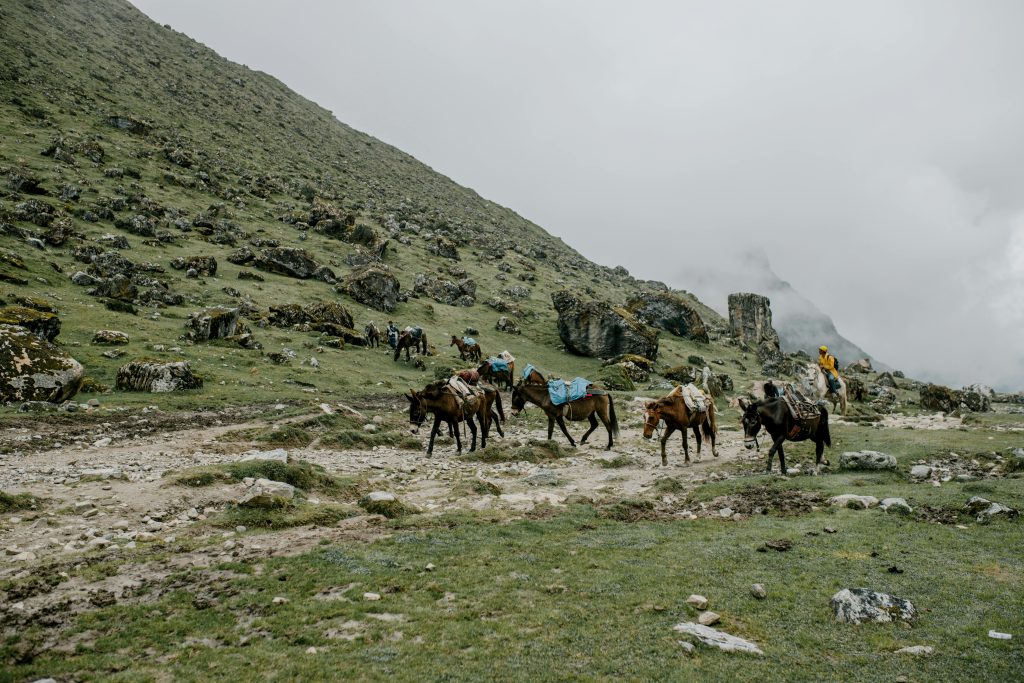
🧳 7. How Should I Prepare Physically for the Salkantay Trek?
The Salkantay Trek is classified as moderate to challenging, depending on your fitness level and altitude tolerance. You don’t need to be a marathon runner, but good physical condition is definitely helpful.
💪 Fitness Tips:
- Start training at least a month before your trip. Regular cardio exercises like hiking, walking, cycling, or jogging will help.
- Practice hiking with a backpack to simulate the trek conditions. Start with 5–10 km hikes and gradually increase your distance.
- Try to do a few uphill hikes or stair climbing—this will help you build leg strength for the ascents.
- Don’t forget stretching and flexibility exercises to prevent injuries.
If you live at sea level, acclimating to the altitude is crucial. Spending at least 2–3 days in Cusco before the trek begins will help your body adjust to the high altitude.
🧠 8. Is Altitude Sickness a Real Concern?
Yes—altitude sickness (also known as “soroche”) can affect anyone, regardless of age or fitness. The highest point on the Salkantay Trek is the Salkantay Pass at 4,650 meters (15,255 feet) above sea level.
🩺 Symptoms include:
- Headache
- Dizziness or nausea
- Shortness of breath
- Fatigue
- Trouble sleeping
🛡️ How to Prevent It:
- Acclimatize in Cusco for 2–3 days.
- Hydrate well, and avoid alcohol and heavy meals.
- Chew coca leaves or drink coca tea – a traditional remedy in the Andes.
- Move at your own pace. Don’t rush!
- Consider taking altitude medication (like Diamox) – consult your doctor before the trip.
Most tour guides carry oxygen and first-aid kits. If symptoms worsen, you should descend to a lower altitude immediately.
🗺️ 9. Can I Do the Trek Without a Guide?
Yes, it is technically possible to hike the Salkantay Trek without a guide, as it’s not a restricted trail like the Inca Trail. However, doing it independently requires serious preparation.
🧭 Pros of going without a guide:
- More freedom and flexibility in your itinerary.
- Lower cost, as you won’t be paying for a tour company.
⚠️ Cons:
- You’ll need to carry all your gear yourself.
- You must plan logistics (accommodation, meals, transportation) in advance.
- Navigation can be tricky in some sections, especially in poor weather.
- In case of emergency, help may not be readily available.
For most travelers, especially those not familiar with the region, hiring a licensed guide or joining a group tour is highly recommended for safety and comfort.
🛏️ 10. What’s the Accommodation Like?
Most Salkantay treks offer different accommodation options depending on the company you choose and your budget.
🏕️ Standard Option:
- Campsites with tents set up for you.
- Sleeping mats and sleeping bags are usually provided or rented.
- Basic facilities—cold showers, shared toilets, no Wi-Fi.
🛖 Lodge-to-lodge Option:
- Upgraded comfort, such as mountain eco-lodges with real beds and hot water.
- Warm meals served in dining halls.
- Some even have jacuzzis and stunning views!
No matter what you choose, the scenery and experience will be unforgettable. Remember to pack layers—nights in the mountains can be freezing.
🍽️ 11. What Kind of Food is Provided During the Trek?
If you book with a reputable tour operator, you can expect nutritious, freshly prepared meals during the Salkantay Trek.
🥘 Typical Meals Include:
- Breakfast: Bread, eggs, pancakes, fruit, tea, coffee, and coca tea.
- Lunch: Soup, rice, vegetables, chicken or beef, pasta, and juice.
- Dinner: Similar to lunch, often with a dessert or hot drink.
- Snacks: Some tours include snacks like popcorn, crackers, or cookies after hiking.
Vegetarian, vegan, and gluten-free options are often available upon request, but you should always inform your operator in advance.
If you’re doing the trek independently, you’ll need to bring your own food or plan stops at local hostels along the route where meals can be purchased. Water is usually boiled and provided by the guides, but it’s wise to bring water purification tablets or a filter just in case.
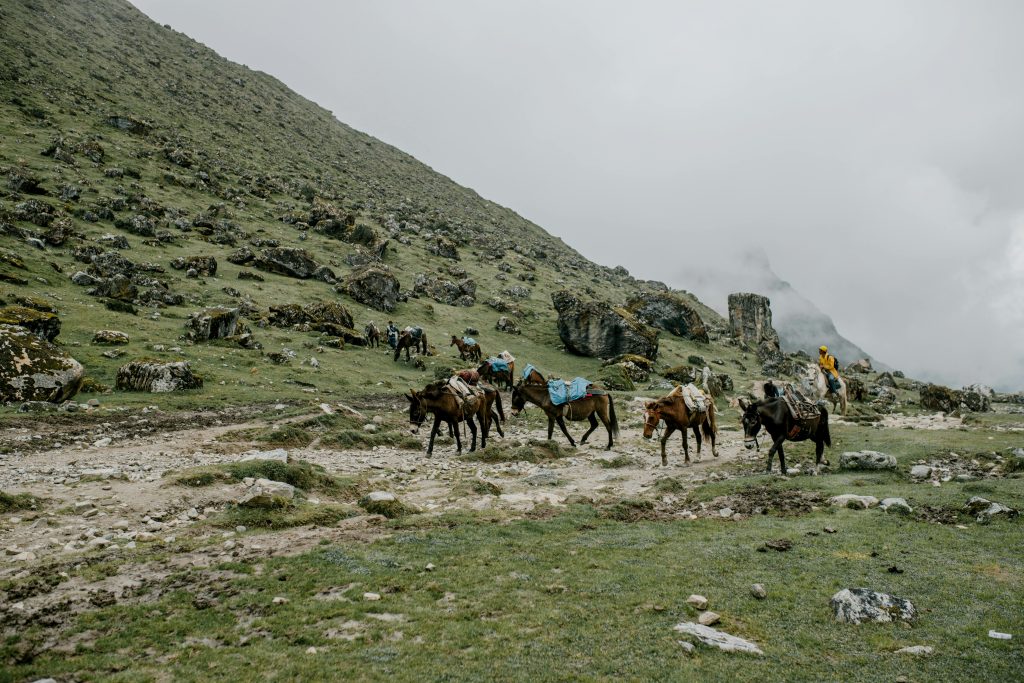
🎒 12. What Should I Pack for the Salkantay Trek?
Packing smart is essential! Weather conditions change quickly in the Andes—from hot sun to freezing nights and rainstorms.
📋 Must-Have Items:
- Good hiking boots (broken in, waterproof if possible)
- Layers: base layer, fleece, insulated jacket, waterproof jacket
- Thermal sleeping bag (or rent one if provided)
- Daypack with rain cover
- Reusable water bottle or hydration system
- Sun protection: hat, sunglasses, sunscreen
- Toiletries & personal items
- Headlamp or flashlight with batteries
- Trekking poles (optional but very helpful)
- Snacks: protein bars, nuts, chocolate
🛅 Luggage Tips:
- Most tour operators allow you to bring 5–7 kg (11–15 lbs) in a duffel bag that will be carried by mules or porters.
- You’ll carry only your daypack with essentials.
📱 13. Is There Internet or Cell Service on the Salkantay Trek?
Generally, don’t expect consistent signal or internet during the trek. Some areas near villages or lodges may have limited phone reception, but Wi-Fi is very rare.
🔌 Electricity:
- In basic camps, electricity may not be available, or you may need to pay to charge your devices.
- Bring a power bank to keep your phone or camera charged for photos.
- Go offline and enjoy the peace and disconnect of the Andes!
📅 14. What’s the Best Time of Year to Do the Salkantay Trek?
The dry season (May to September) is the most popular time to hike the Salkantay Trek.
🌞 Best Conditions:
- May to September: Dry weather, clear views, chilly nights.
- April and October: Transition months—still good but with a slight chance of rain.
🌧️ Rainy Season:
- November to March: Trekking is still possible, but you’ll likely face muddy trails and rain showers. Some agencies suspend operations during peak rainy months (January–February).
If you’re looking for fewer crowds, consider going in the shoulder seasons (late April or early October).
💰 15. How Much Does the Salkantay Trek Cost?
The cost of the Salkantay Trek depends on the type of tour, the operator, and inclusions.
💵 Average Prices:
- Budget tours: $200–$300 USD (basic camping, large groups)
- Mid-range tours: $350–$500 USD (smaller groups, better food/accommodation)
- Luxury lodge treks: $700–$1000+ USD (private rooms, gourmet meals)
If you trek independently, you could spend as little as $100–$150 USD, but this requires more planning and equipment.
Make sure your tour includes:
- Transportation to and from Cusco
- Food and water
- Guide and support team
- Camping or lodging
- Entrance to Machu Picchu
🏁 16. How Do You End the Salkantay Trek at Machu Picchu?
The final day is the most exciting—you finally reach the magical citadel of Machu Picchu!
🗺️ Final Stretch:
- On Day 4 or 5 (depending on your itinerary), you’ll arrive at Aguas Calientes, the town at the base of Machu Picchu.
- You can take a bus (25 min) or hike up the stairs (~1.5 hours) to the Machu Picchu entrance early the next morning.
⏰ Time at Machu Picchu:
- Most tours give you 2–3 hours for a guided visit inside the ruins.
- After the tour, you can explore on your own or hike Huayna Picchu or Machu Picchu Mountain (if you booked tickets in advance!).
📜 17. Do You Need Permits for the Salkantay Trek?
No permit is needed for the Salkantay route itself, which makes it a great alternative to the regulated Inca Trail.
🎟️ However, You Do Need:
- A Machu Picchu entrance ticket
- A Huayna Picchu or Machu Picchu Mountain ticket (optional, must be booked early!)
- Your passport to enter the site
Most reputable agencies will handle the permits for you. If you’re doing it solo, make sure you book your Machu Picchu entrance weeks or months in advance, especially in high season.
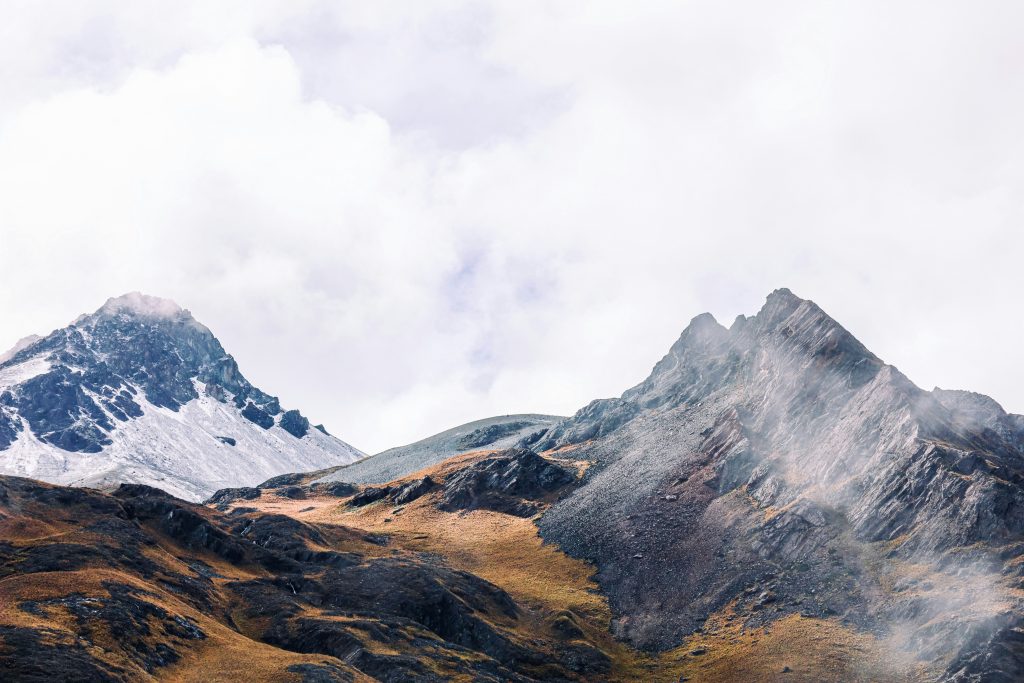
🧭 18. Can You Combine the Salkantay Trek with Other Treks?
Yes! If you want an epic adventure, some companies offer combined treks, such as:
- Salkantay + Inca Trail (Salkantay–Inca Combo) – 7 or 8 days
- Salkantay + Llactapata ruins – includes an extra archaeological site
- Salkantay + Jungle Trek – includes ziplining, biking, and hot springs
These combos are ideal if you have more time and want to explore lesser-known trails on the way to Machu Picchu.
📝 19. Final Tips for a Successful Salkantay Trek
Here are a few last recommendations before you go:
✅ Do:
- Train for at least 2–3 weeks before your trek (walks, cardio, stairs)
- Drink coca tea or chew coca leaves to help with altitude
- Take time to enjoy the scenery—Salkantay is stunningly beautiful
- Travel light but smart—pack layers and rain gear
- Book your Machu Picchu entrance tickets in advance
❌ Don’t:
- Underestimate the cold nights—temperatures can drop below freezing
- Forget to tip your guides, cooks, and muleteers (optional but appreciated)
- Leave trash on the trail—leave no trace!
- Try to rush—this is a once-in-a-lifetime journey 🌄
❓20. Salkantay Trek or Inca Trail: Which is Better?
It ultimately depends on your priorities. Here’s a quick recap:
| Feature | Salkantay Trek | Inca Trail |
|---|---|---|
| Permit Required | ❌ No | ✅ Yes (limited spots) |
| Scenery | 🏔️ Mountains, glaciers, jungle | 🏞️ Inca ruins, valleys |
| Difficulty | 💪 High altitude, longer days | 🚶♂️ Shorter, more stairs |
| Price | 💰 More budget-friendly | 💸 More expensive |
| Crowds | 😌 Less crowded | 🧑🤝🧑 More tourists |
| Authentic Ruins | 🏛️ Few on the way | 🏛️ Multiple Inca sites |
| Ends at Machu Picchu | ✅ Yes | ✅ Yes |
If you love nature, adventure, and solitude, go with the Salkantay Trek.
If you want a historic route with original Inca ruins, and you’re okay booking months in advance, choose the Inca Trail.
🗣️ What Do You Think?
Would you rather trek through snowy mountains and lush jungle or walk in the footsteps of ancient Incas?
Have you done either of these treks? Share your experience in the comments below!👇
Or, if you’re still planning your trip, what excites you most about hiking to Machu Picchu?
🌟 Final Thoughts
The Salkantay Trek is not just an alternative to the Inca Trail—it’s a spectacular journey in its own right. With majestic mountains, serene valleys, cloud forests, and the thrill of arriving at Machu Picchu, it’s one of the most rewarding treks in South America.
Whichever trail you choose, your adventure to Machu Picchu will change you forever. So grab your boots, charge your camera, and start your journey into the heart of the Andes! 🥾🇵🇪✨
